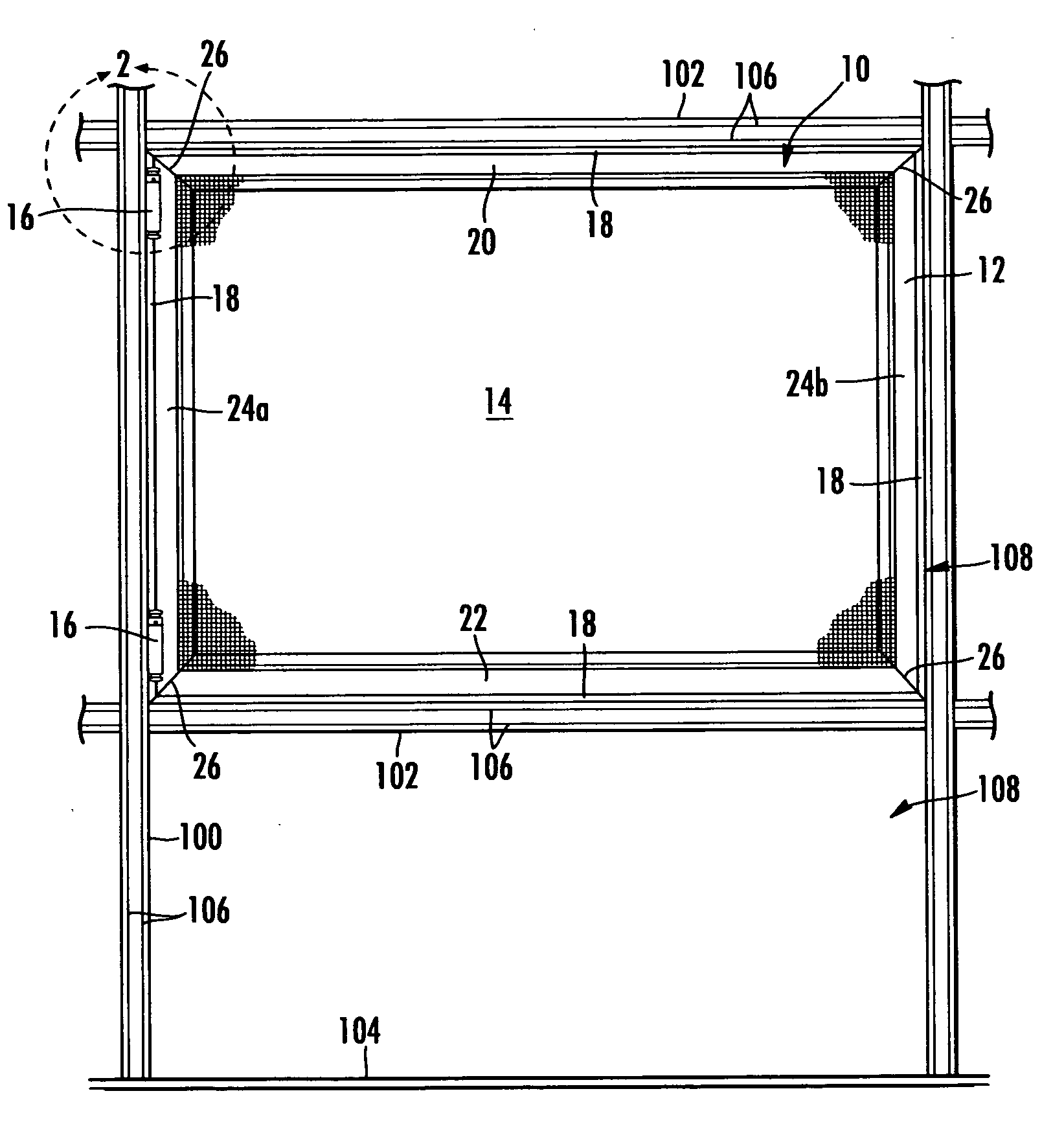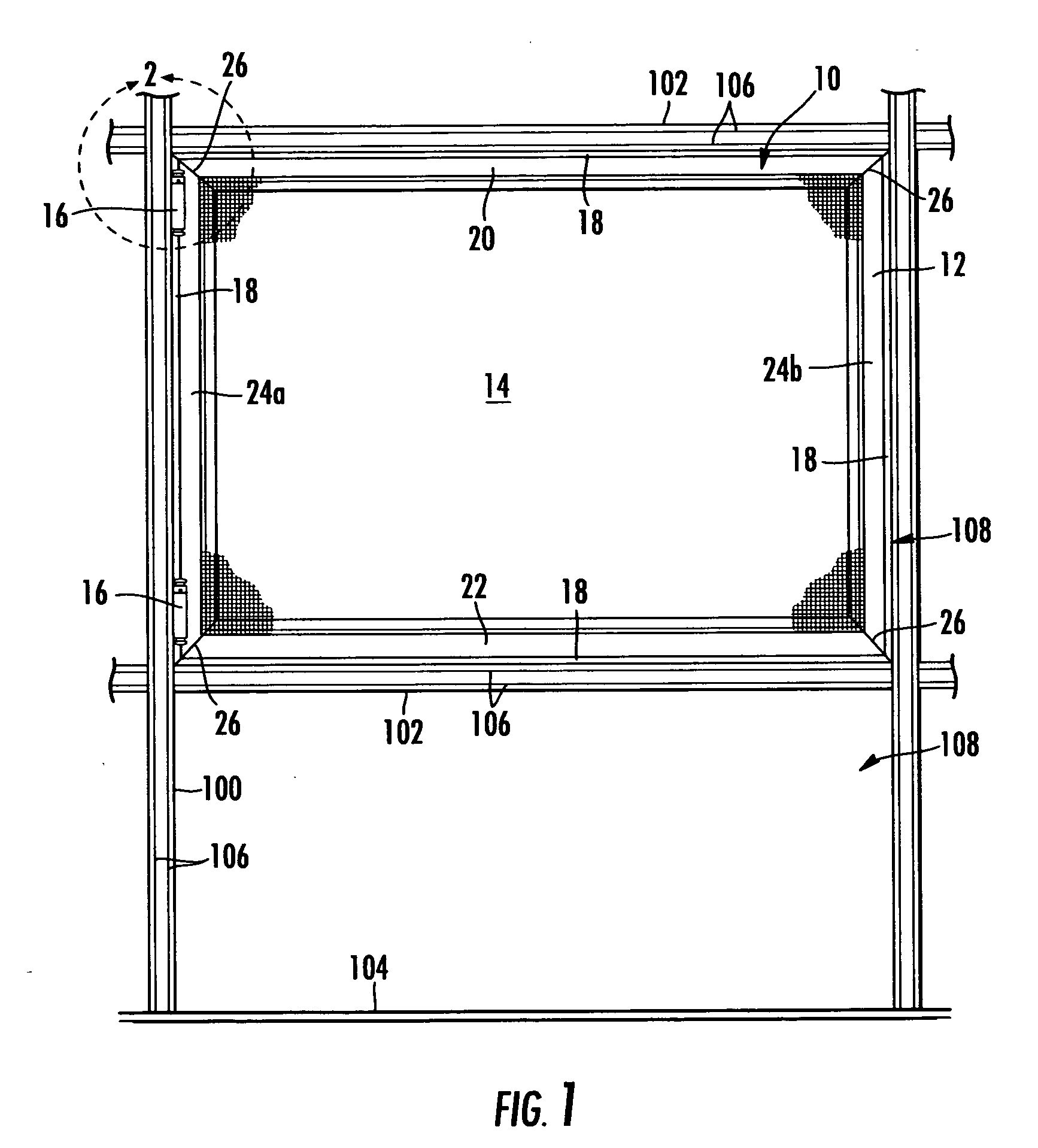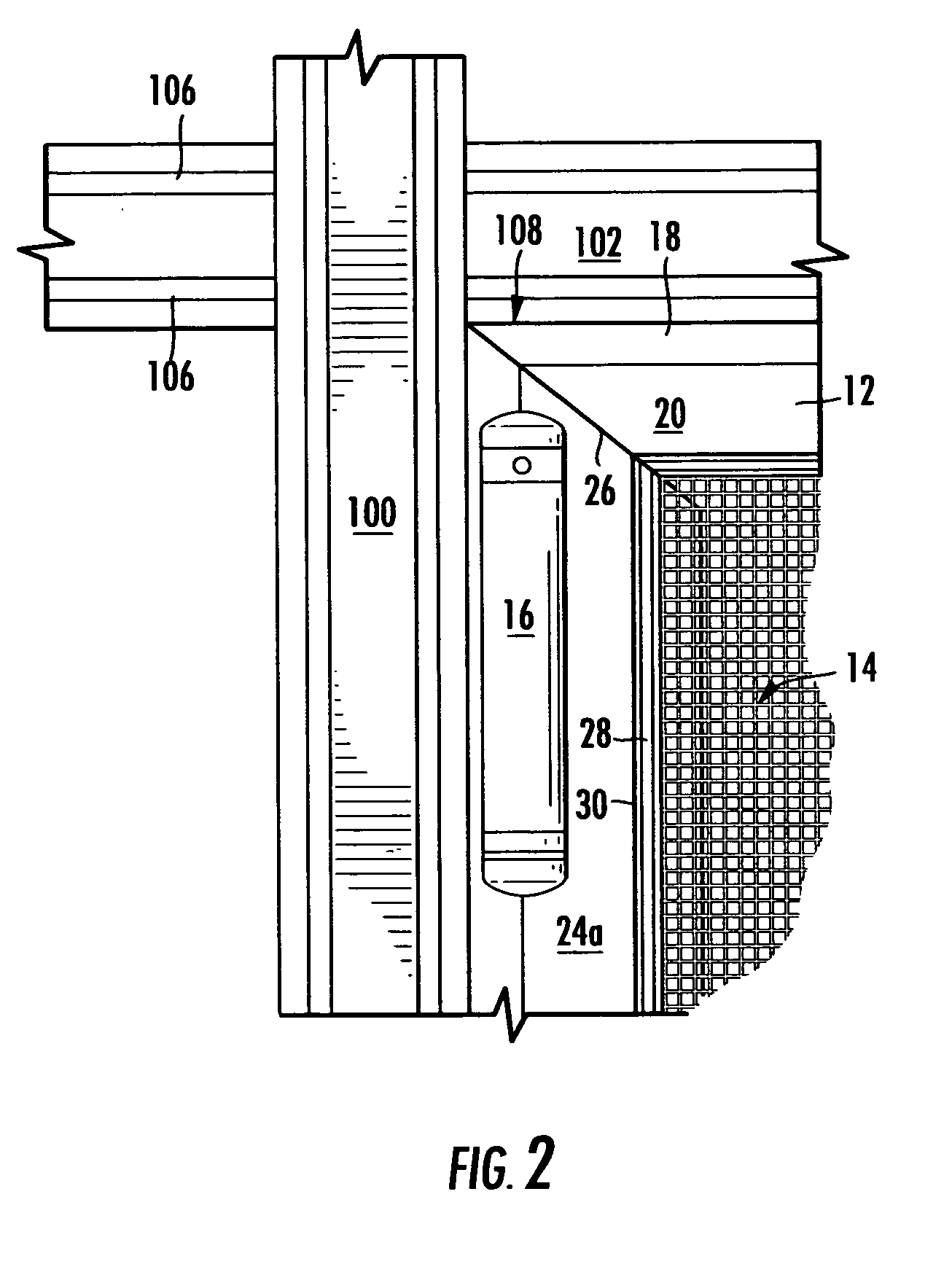Pivotable screen assembly for screened enclosures
a technology of movable screens and enclosures, which is applied in the direction of screens, insect protection, construction, etc., can solve the problems of prone to severe weather, inability to pass through the screening material quickly enough, and complete destruction of the enclosure, etc., and achieves rapid construction and installation, simple design, and low cost.
- Summary
- Abstract
- Description
- Claims
- Application Information
AI Technical Summary
Benefits of technology
Problems solved by technology
Method used
Image
Examples
Embodiment Construction
[0021]In order that the construction and benefits of the subject invention may be fully appreciated it is first necessary to understand the environment within which it is installed, namely a framed enclosure. Accordingly, reference is first made to FIGS. 1 and 2 in which there is illustrated a typical configuration of framing members which are most commonly of the extruded aluminum type. More specifically, the various framing members used to create a “pool cage” or other similar screened enclosure include: 1) vertically oriented posts 100 (sometimes called “columns”) which are the primary support means for side walls, 2) diagonally oriented beams (not shown) which are the primary support means for the roof structure, 3) horizontally oriented purlins 102 disposed between posts and between beams to impart stability and lateral support, and 4) base members 104 which are used to anchor screening material to the floor about the enclosure's perimeter. In screened enclosures of the prior a...
PUM
 Login to View More
Login to View More Abstract
Description
Claims
Application Information
 Login to View More
Login to View More - R&D
- Intellectual Property
- Life Sciences
- Materials
- Tech Scout
- Unparalleled Data Quality
- Higher Quality Content
- 60% Fewer Hallucinations
Browse by: Latest US Patents, China's latest patents, Technical Efficacy Thesaurus, Application Domain, Technology Topic, Popular Technical Reports.
© 2025 PatSnap. All rights reserved.Legal|Privacy policy|Modern Slavery Act Transparency Statement|Sitemap|About US| Contact US: help@patsnap.com



